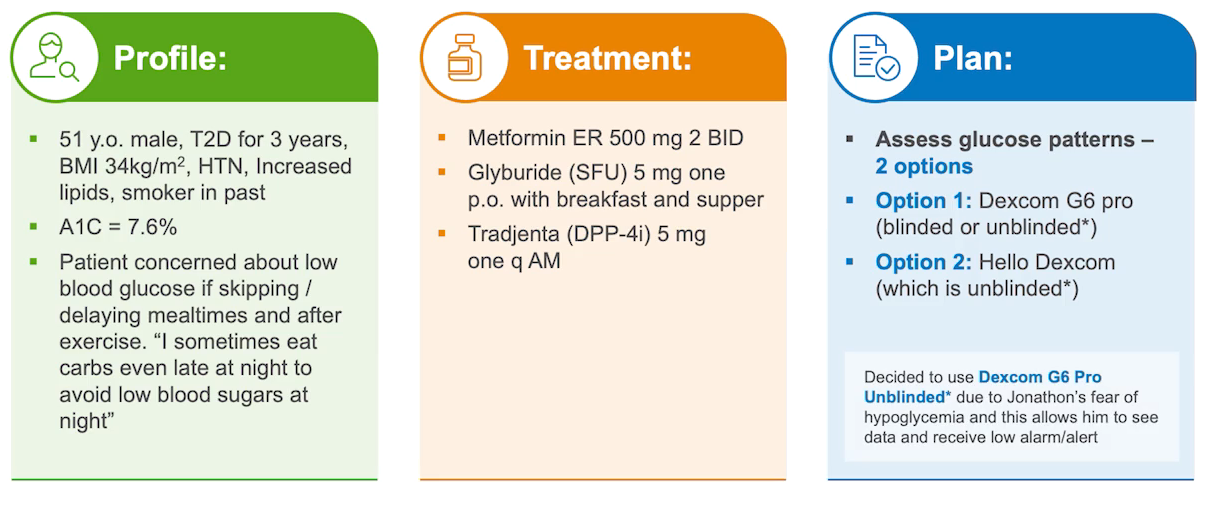Managing Type 2 Diabetes using Real-Time Continuous Glucose Monitoring and Professional Guidelines
A1C reflects average blood glucose over 2-3 months. Does that give you all the information you need to make therapy decisions in type 2 diabetes management? In addition, professional guidelines suggest specific diabetes medications based on individual characteristics, but do you have experience using continuous glucose monitoring (CGM) to select the most appropriate medication? Using real-time CGM (RT-CGM) can help!

RT-CGM reports, statistics, trend graphs, and time in range create a detailed picture of what an individual with diabetes is experiencing. Variability, patterns, and undetected hypoglycemia are also identified to guide a clinician towards selecting the best medication for that individual.
This video will review 3 case studies applying professional diabetes guidelines and RT-CGM reports and introduce you to the benefits of incorporating RT-CGM for diabetes management.
These case studies will show how RT-CGM:
- Creates an opportunity for a person with diabetes to see their glucose numbers in real time. The individual wearing RT-CGM can see how health behavior changes and medications affect their glucose. RT-CGM also puts the person with diabetes in the “driver’s seat” to experiment with new activities, foods, and medications and see the impact on glucose—A1C doesn’t give that information.
- Gives clinicians information to identify issues and provides guidance for adding, changing, or titrating medications in both type 1 and type 2 diabetes.